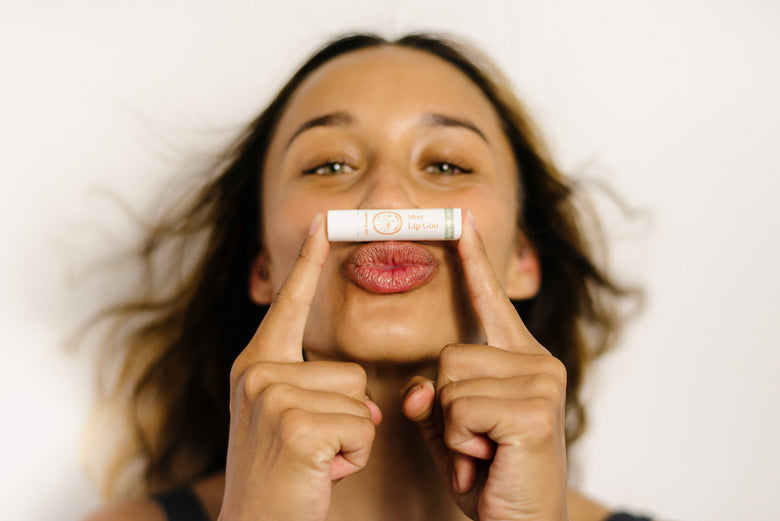Not-so-fun fact: There are bath bombs on the market with suspect ingredients. Many contain dubious dyes and additives that can cause UTI's, yeast infections, hormone imbalance, and breast cancer.
As if that's not bad enough, a grip of bath bomb brands also use glitter. Big reveal: our waterways don't love micro-plastic.
Artificial-based bath bombs are nightmares for your vagina, your body, and the earth. If you see any of the following ingredients in a bath bomb you're considering, hurl it as fast as you can into the garbage:

Synthetic Musk:
Synthetic Musk is a fragrance commonly used in the beauty industry, from lotions to sprays to bath bombs. According to the US National Library of Medicine, synthetic musk bioaccumulates in breast milk and body fat, causing disruption in cell functioning and hormone systems, potentially resulting in cancer and hormone imbalance.
Synthetic musk has been banned from several countries—but not the US. Thanks, America.
In addition to hormone imbalance and cancer, synthetic fragrances (such as "musk") can throw off the pH of your vagina, causing yeast infections and UTIs. How? Between the ages of 14-49, the pH of your vagina needs to be 4.5 or below to avoid infection. Your va-jay deserves better than this stuff.

Artificial Dyes:
As "pretty" as the swirls of synthetic and artificial colors are, they're also known for causing an array of ill health effects. Below you can find sketchy dyes commonly used in Bath Bombs:
- Red #33: A dye derived from petroleum or coal tar (a known human carcinogen). Bummer.
- Yellow #5: The cheapest synthetic food colorant on earth. Despite mounting evidence of Yellow #5 being linked to various ailments including anxiety, migraines, clinical depression, cancer, hyperactivity in children, and sleep disturbance, the FDA has refused to ban the colorant in the US.Yellow #5 is completely banned in Austria and Norway and the EU requires warning labels on products that contain Yellow #5. The British government actively advises against using it at all. According to Healthline, "research does suggest that this dye may harm cells over time, especially when cells are exposed to greater amounts than the recommended intake."
- Yellow #10: Another dye to avoid at all costs. Yellow #10 has been approved for use in drugs and cosmetics but is not approved as a colorant for food. (Remember, your skin is highly porous, so you're absorbing up to 60%.) If you're not allowed to eat it, why would you put it on your skin?
- Red #4: Even the shakey FDA standards of the US have restrictions on Red #4. This dye is only recommended for external use in certain concentrations (just like Yellow #10). Again, anything you want to keep external is NOT something you want to soak in.
To wrap up the whole artificial-dye-drama, let's just agree not to soak in synthetic stuff.

Used to improve texture, Propylene Glycol has been shown to harm the immune system by impairing its capacity to fight disease and repair damaged tissue in the body.
Outside the food industry, Propylene Glycol is found in paint, plastic, antifreeze, and aircraft de-icing fluids (anti-freeze).
It has been banned in Europe because the EU isn't into putting anti-freeze in (or on) their bodies, but the FDA in the US is like, "It's fine! Just don't use too much! Lol!" No thanks.

Glitter:
So pretty, right? Not so much. Glitter is made from tiny pieces of non-recyclable plastic that have been covered in aluminum and then cut into tiny shapes. Let's start with the environmental hazards: Bath Bombs that contain glitter pollute our waterways, absorbing chemicals and pollutants on their way to our rivers and seas.
Every single tiny sparkle will take thousands of years to break down. Micro-plastics, such as glitter, can be consumed by plankton and plankton is consumed by fish. The fish end up on our plate and then we end up eating the thing we washed down the drain. The cycle continues.

Conclusion:
It's a scary consumer world out there, especially when the organization (ahem...lookin' at you, Food and Drug Administration) that is supposed to be banning harmful products is not banning said harmful products.
It's important to make conscious decisions about the products we buy. Each purchase makes a statement about what we value; the environment, our oceans, our bodies.
Fortunately, you never have to worry about scrupulously reviewing the ingredients in our Bath Bombs. They contain no harsh toxins, no synthetic fragrances, and certainly no plastic or anti-freeze.




